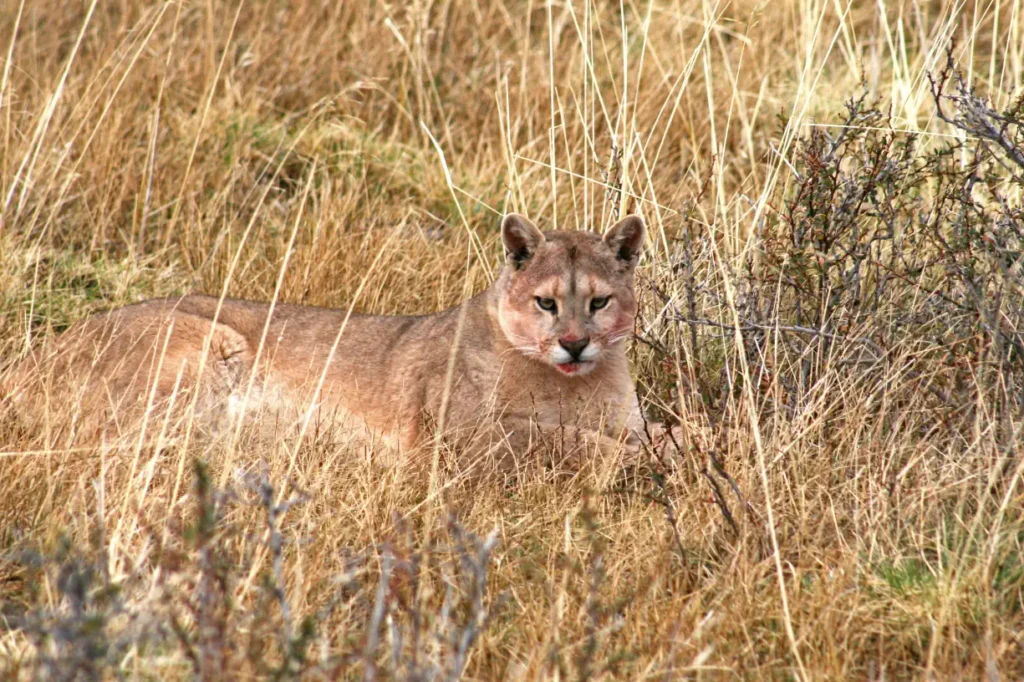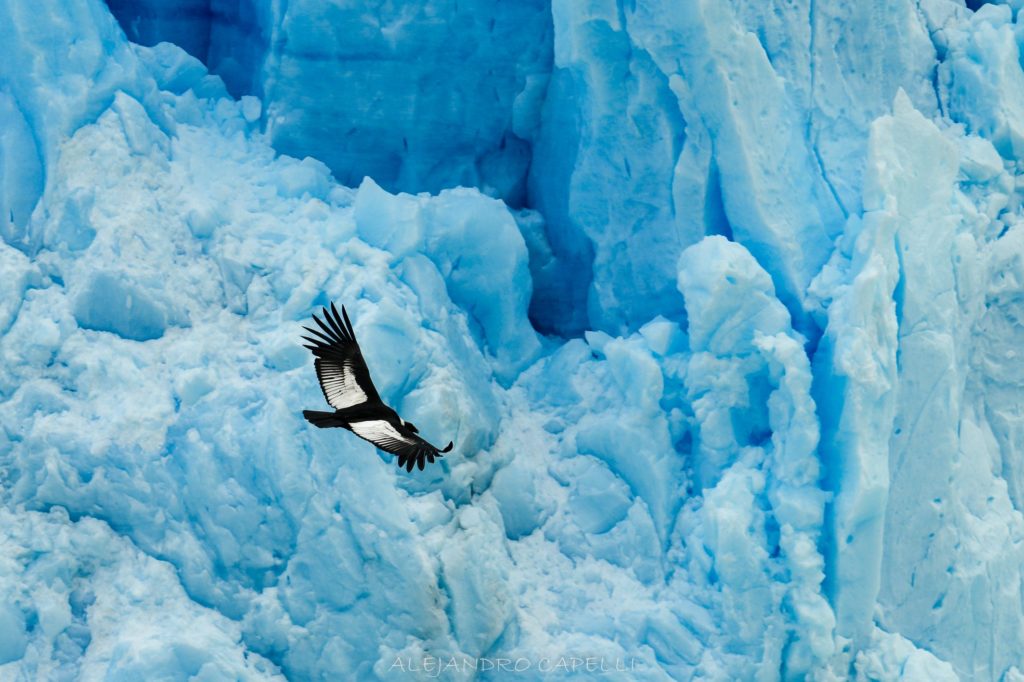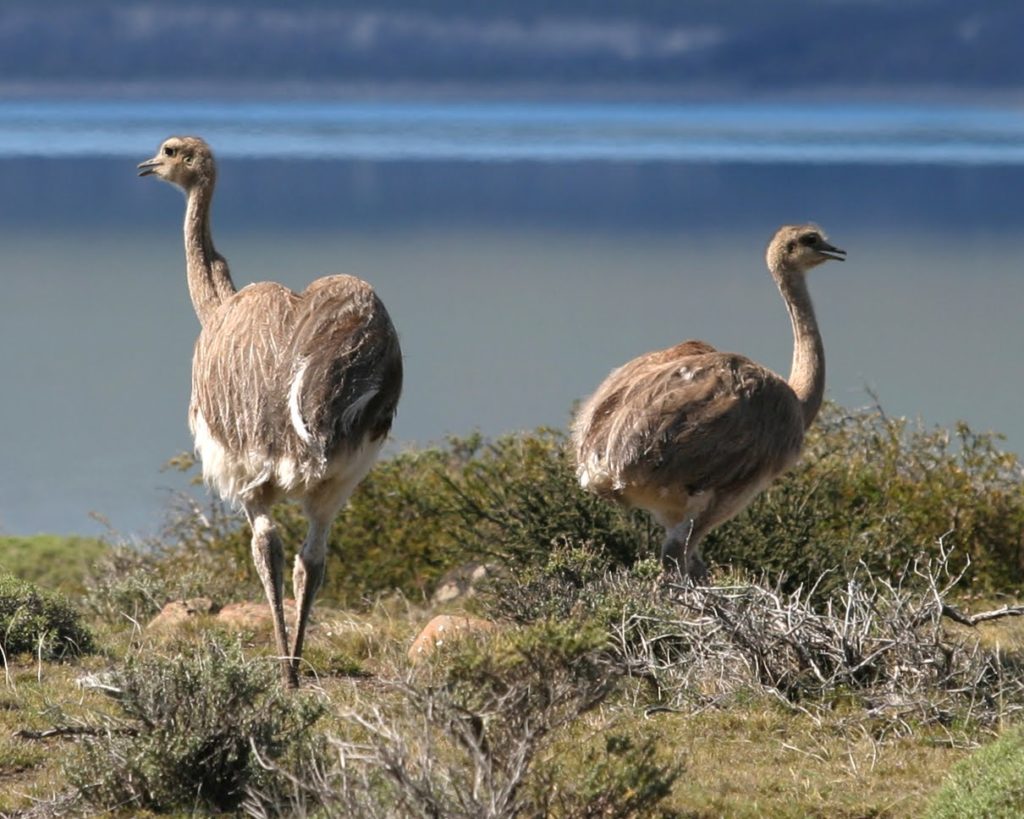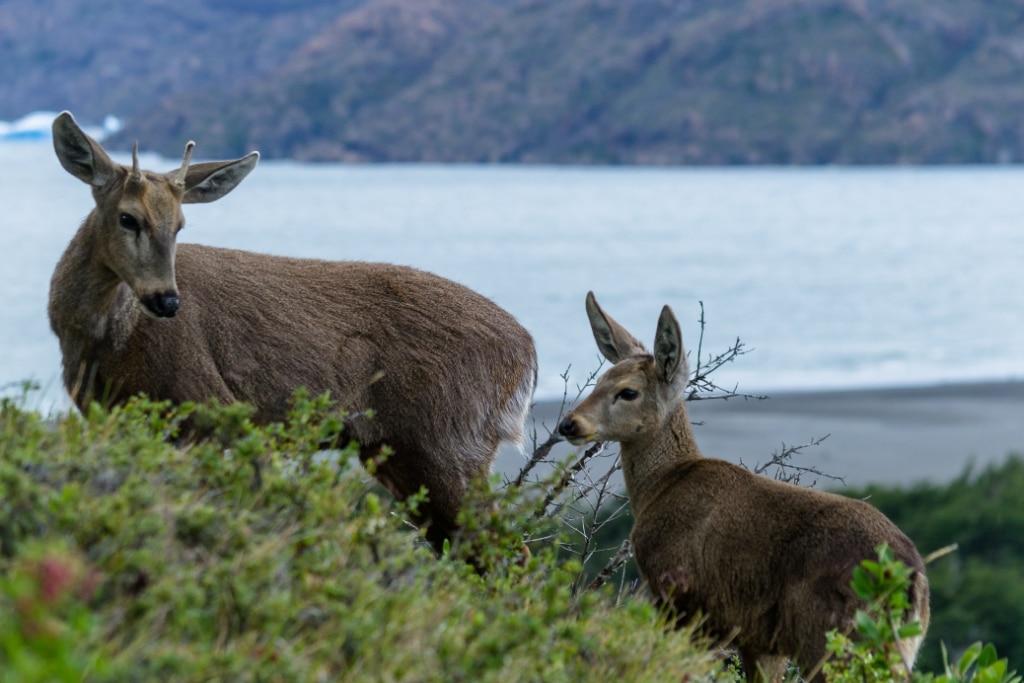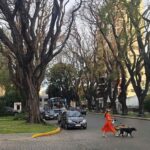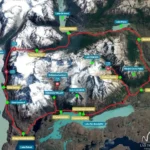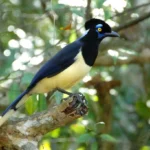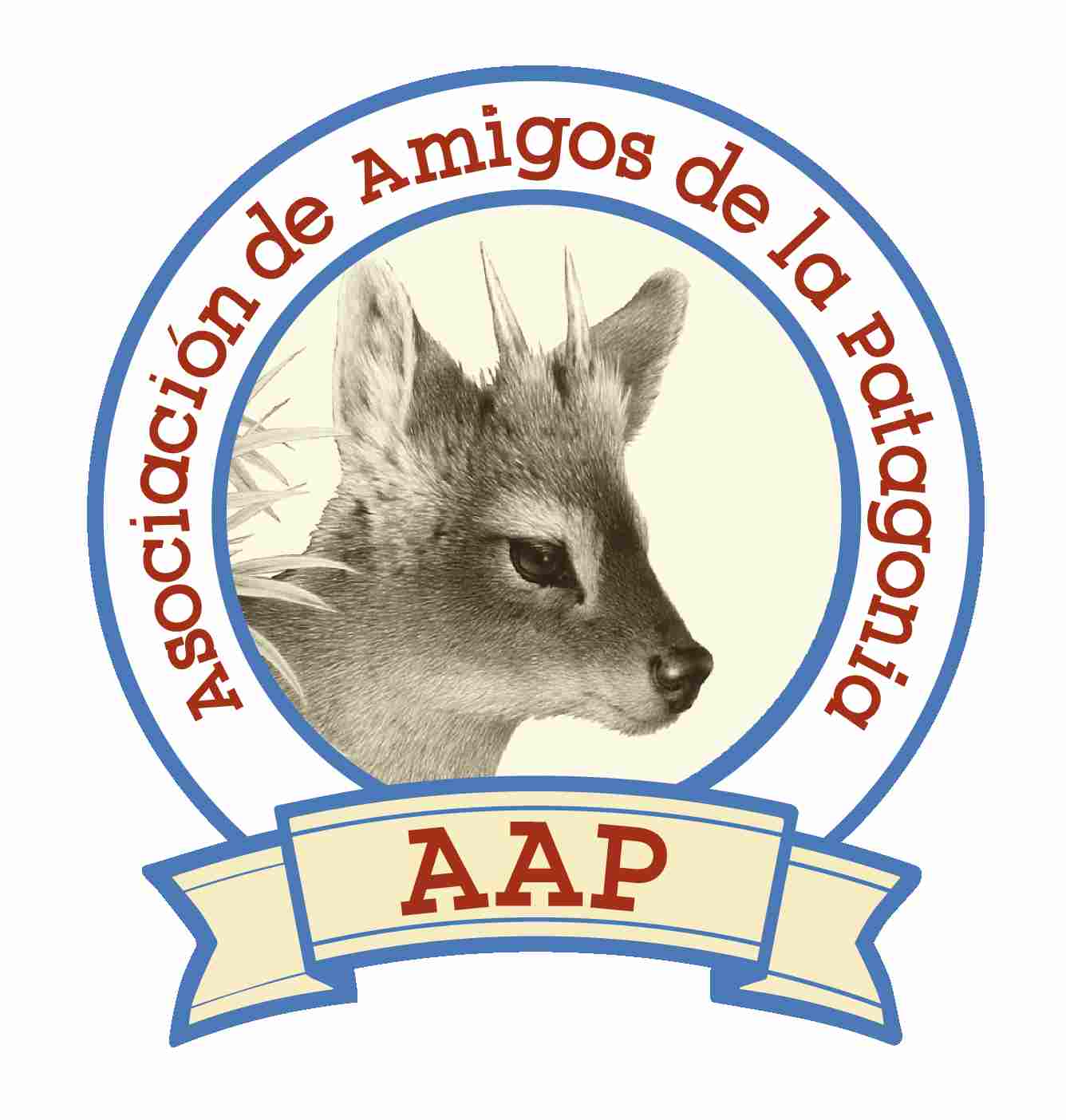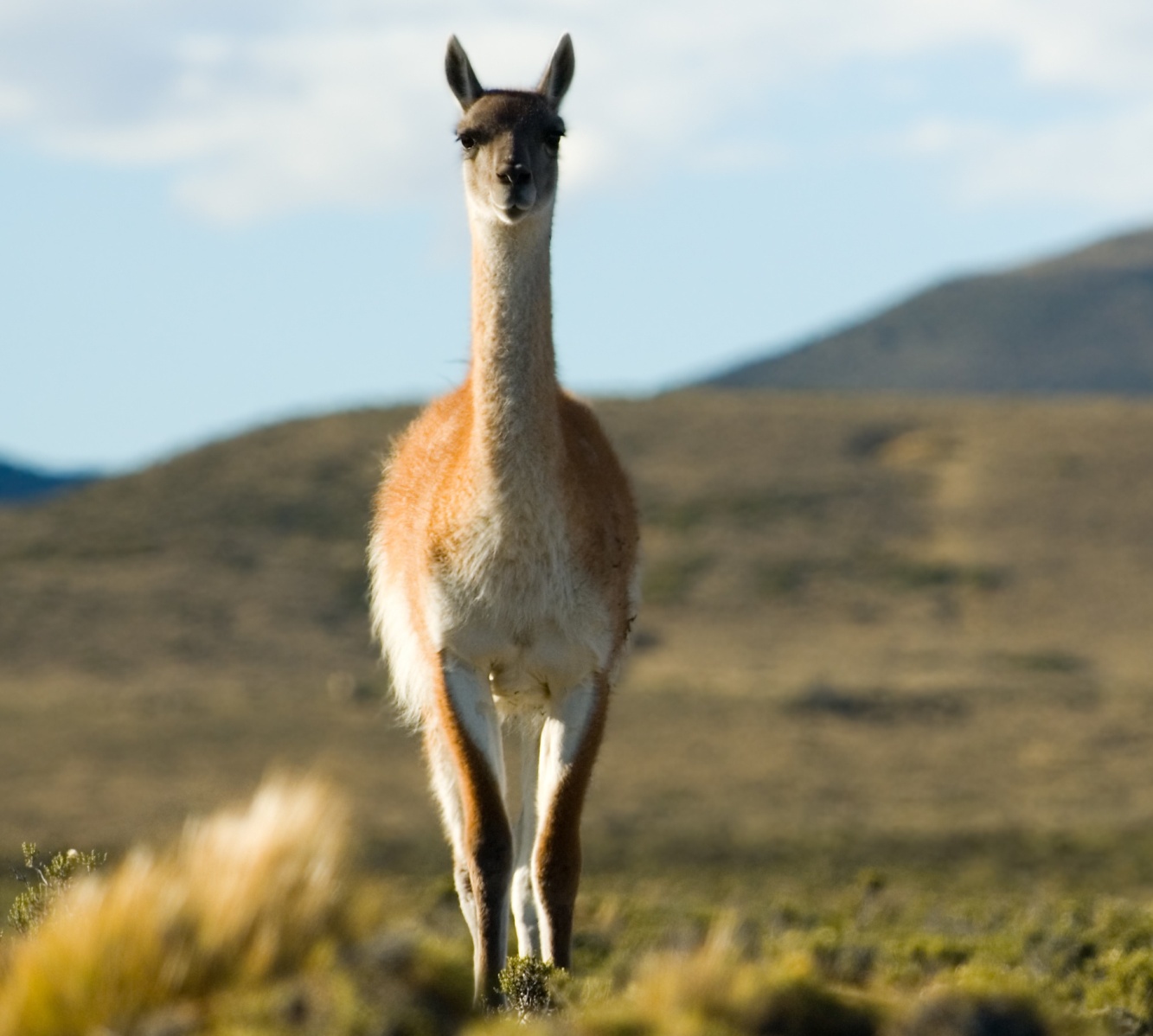
Even though there is not a description as such, and actually there isn’t officially a Patagonia Big Five, many people have agreed on creating our own “Big Five”. Just like in Africa, spotting these animals in the wild is a major highlight for nature lovers and photographers traveling through Argentine and Chilean Patagonia.
Naturally, we’re excluding from the list the ocean wildlife (such as Southern Right Whales and Humpback Whales), and some iconic species like the Penguins and Pichi Armadillo, which will add more excitement to your trip. The Big 5 of Patagonia would then be the following ones:
1. The Puma (Puma concolor)
Also known as the Patagonian mountain lion, this elusive and majestic predator is the apex carnivore of the region. We invite you to check our article about Pumas in Patagonia.
Where to see it:
Torres del Paine National Park in Chile is considered the best place in the world to spot wild pumas, especially in the southern and eastern sectors. On the Argentine side, places like Parque Patagonia Argentina and Parque Patagonia Chile offer increasing chances.
Why it’s iconic:
Its role as a top predator is essential to the ecosystem, and its stealth and elegance have made it a symbol of Patagonian wilderness.
2. The Andean Condor (Vultur gryphus)
With a wingspan of up to 3 meters (10 feet), the Andean condor is one of the largest flying birds on Earth. Learn more about this bird in our Andean Condor article.
Where to see it:
Frequently seen soaring above mountain ridges and canyons across the region. Great spots include the Quebrada del Condorito (Córdoba), Torres del Paine, El Chaltén, and El Calafate. However, they’re widely spread across most of the Andes, not only in Patagonia, but also in Mendoza, northwest Argentina, Chile, and other South American countries.
Why it’s iconic:
A sacred bird in many indigenous cultures, the condor is Patagonia’s sky sovereign — elegant, ancient, and quietly powerful.
3. The Ñandú (Rhea pennata – Choique)
Often mistaken for a small ostrich, the ñandú (also known as Darwin’s rhea / Rhea pennata / or Choique) is a flightless bird that roams the Patagonian steppe in small groups. Learn more about the Rhea in our article Choique.
Where to see it:
Extremely common in open areas along Ruta 40, and also seen in a lot of destinations within Patagonia, such as Peninsula Valdés, El Calafate, Torres del Paine, El Chaltén, etc.
Why it’s iconic:
The ñandú is a curious and amusing creature — quick on its feet and a true emblem of the Patagonian plains.
4. The Guanaco (Lama guanicoe)
The guanaco is perhaps the most visible of the Big Five. Related to the llama, it thrives in herds across the Patagonian steppe. Find more information in our post about the Guanacos.
Where to see it:
In a vast amount of destinations, from Tierra del Fuego to the Andean foothills, including Torres del Paine, Los Glaciares National Park, and many other areas.
Why it’s iconic:
Its adaptability, elegance, and deep connection to indigenous cultures make it a symbol of endurance in harsh environments.
5. The Huemul (Hippocamelus bisulcus)
The most elusive of the five, the huemul is a native deer species and a national symbol of both Chile and Argentina (appears on their coats of arms). It’s endangered and rarely seen. Learn more in our Huemul post.
Where to see it:
It’s not that easy, but perhaps you have chances in areas such as El Chaltén, and near Andean forests of Argentina and Chile.
Why it’s iconic:
The huemul represents Patagonia’s fragility and the importance of conservation. Quiet, shy, and endangered — a living treasure.
Wildlife tours in Patagonia
At Beyond BA Latam, we design custom tours that bring you closer to nature — whether that means tracking pumas with expert guides, hiking near condor nesting cliffs, or quietly waiting by a river for a glimpse of the rare huemul.
Reach out to start planning your wildlife journey!
Get inspired by some of our travel ideas, listed below:
Puma Tracking Tour and Orca Watching
Mision Province & Ibera Wetlands
Orca Whale Watching in Patagonia Argentina
Iguazu Falls, Peninsula Valdes and the Wetlands
Where to see Penguins in Patagonia
Peninsula Valdes: Wildlife Tour
0



